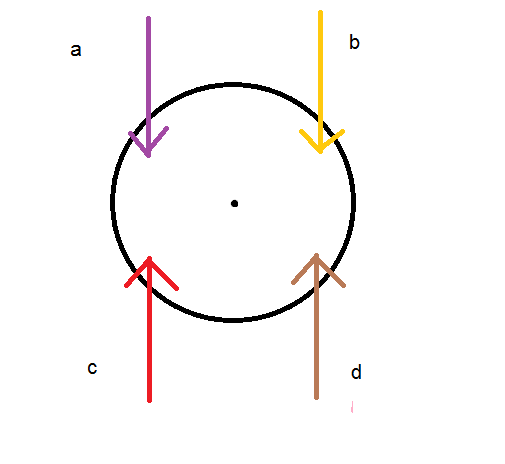The answer to this question
force applied not on the center of mass
states that for a force applied not directly on the center of mass will have the same linear acceleration as one applied on the center of mass. If this is true, then consider the following:

A disc with center of mass on the dot. Firstly, does that mean that force a will result in purely downward motion, as if a could be translated towards the center of mass (of course with some torque as well), or will it be at an angle (if so, what angle?). Secondly, does force a balance with force c (no net linear force) or does force a balance with force d (for linear) or do both pairs balance? I'm supposing that a and c will generate no torque and a and d will, but I am only really interested in linear motion for now.
